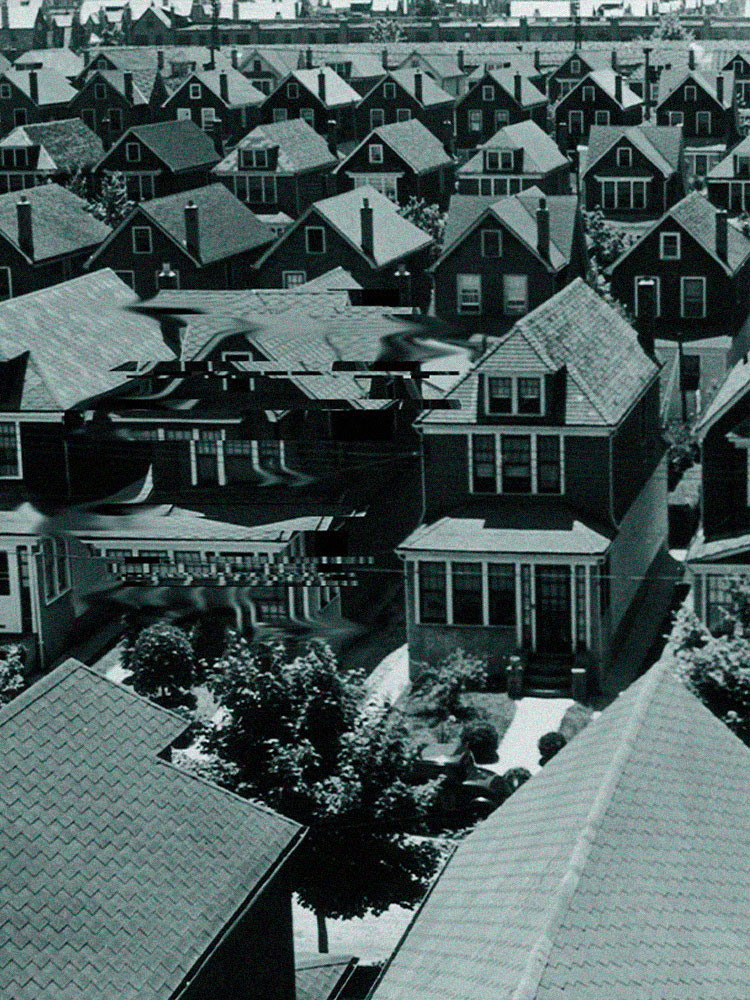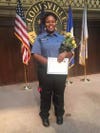Who Gets to Be Safe at Home?
Columnist Roxanne Fequiere reflects on Breonna Taylor.
Updated Oct 11, 2018 4:06 PM
We may earn revenue from the products available on this page and participate in affiliate programs.
In her new column, writer Roxanne Fequiere explores the ideas, objects, and emotions that create an ever-evolving notion of home. Here, she reflects on Breonna Taylor and the lack of safety that many Black people experience, even in their own spaces.
Breonna Taylor wanted a house of her own. She wanted to dance to “Everything” by Mary J. Blige on her wedding day. She wanted to become a nurse. She wanted children, maybe: “I can’t make up my mind,” she once tweeted. “Y’all be making that shit look so easy, but I know it’s probably hard trying to be a great parent.” She wanted to teach her baby sister “to never settle for less than she deserves.” She wanted the hospital where she worked in Louisville, Kentucky, to turn down the AC. She wanted to see her grandmother again. After a long 12-hour shift, she wanted to climb into bed in her apartment, but one day, she planned to have a house of her own.
There is perhaps no version of the American dream that does not include the desire for a place of one’s own. From Jamestown to Levittown, our culture has always been concerned with finding or creating homes. But even a cursory glance at our nation’s history will show that the American pursuit of land and home has been a game rigged in favor of settlers, colonizers, slave owners, and their descendants. Nevertheless, the rest of us persisted—whether in Allensworth or Chinatown, on reservations or in housing projects—keeping our home fires burning, no matter the conditions or consequences.
The home has long been regarded as a sacred space; a canvas on which we may express our identity and our aspirations; a refuge from the dangers of the world outside, even before the onslaught of COVID-19, which led us to chant in unison Stay home, stay home, stay home, a sort of incantation against illness and death.
As an EMT, Taylor didn’t have the luxury of staying home, though by all accounts, she relished her ability to make a difference in people’s lives. In the wee hours of March 13, when a group of plainclothes police officers entered her apartment with a “no-knock” warrant and took her life, she became yet another testament to the difficult truth that Black Americans have never been afforded the right to safety in their own homes.
This after Atatiana Jefferson stepped away from playing video games with her nephew to investigate a noise outside and was shot dead through her bedroom window. This after Botham Jean was murdered in his Dallas apartment by an off-duty cop who crept into his apartment and shot him as he watched television and ate a bowl of ice cream. This after a Detroit SWAT team, accompanied by a true-crime reality TV crew, tossed a flash-bang grenade into 7-year-old Aiyana Stanley-Jones’s home, burning the blanket that covered her sleeping body before ending her life with a single bullet. This after Kathryn Johnston and Alberta Spruill and Eleanor Bumpurs and so many others whose names never made the news, so many others who survived their encounters but continue to carry the lasting terror and trauma.
If the home, and all the presumed protection it affords its inhabitants, can be seen as key to one’s inalienable right to life, liberty, and the pursuit of happiness, it should come as no surprise that attacking the Black home was one of the earliest tactics employed by those with no interest in seeing America’s Black populace as “created equal and independent.”
The Ku Klux Klan sprang to life in December 1865, the same month the Thirteenth Amendment was ratified. In service of their mission to restore pre–Civil War social order, freedmen’s homes were burned and Black farmers forced off their land—in addition to rampant assault, mass murder, riots, and otherwise vicious voter suppression tactics. (It’s worth noting that the Thirteenth Amendment abolished slavery “except as a punishment for crime whereof the party shall have been duly convicted,” and that the foundation of mass incarceration in this country can be traced back to this very loophole.)
The second, Progressive Era edition of the Klan, which expanded its target list to include Catholics, Jews, and immigrants, tried to button up its organization with recruiters, initiation fees, and an official creed—sorry, kreed: to “be true in the faithful maintenance of White Supremacy.” Their constitution claimed they were “shielding the sanctity of the home and the chastity of womanhood,” even as they actively devalued Black personhood and property. By the time that the third Klan bubbled up in direct opposition to the struggle for civil rights, the property had become trenchant: the burning of crosses on front lawns, house bombings, and church bombings, lest anyone get the idea that a house of worship could serve as a place of refuge for the Black community when their individual houses were under siege.
The Klan’s sustained and direct attacks on Black property are only some of the most historically visible ones, mentioned here to highlight the fact that organized crime and state-sanctioned police violence against Black people in their own homes have always served to embolden and inform unaffiliated white people who wish to do the same—whether through outright brutality or bureaucracy, like the “urban renewal project” that reduced Vinegar Hill, a thriving Black neighborhood in Charlottesville, Virginia, to rubble in 1965.
Tulsa, Oklahoma’s Greenwood District, also known as Black Wall Street, managed to flourish in spite of strict segregation laws, and angry white mobs swarmed—by land and by air—to carry out one of the worst incidents of racial violence in American history. When Dr. A.C. Jackson, one of America’s most prominent Black surgeons, saw armed white men approaching his Greenwood residence, he emerged with his hands raised. In response, he was shot in the chest and leg, his house doused in gas and coal oil and lit on fire. Men, women, and children alike reportedly picked through bureaus and closets, stuffing their findings in bed linens. By the time the dust settled on June 1, 1921, the destruction left nearly 10,000 Black people homeless.
There’s never been a shortcut to safety in a country that never intended for us to be protected. That would require white America to stop seeing our community’s gains as their direct losses. We see it in the impotent rage of the Klan; the dripping condescension of countless self-deputized neighbors who stop Black people on doorsteps and in apartment lobbies to verify if they really live there; the bystander apathy that’s allowed all of this to endure for centuries.
And now we find ourselves in the midst of another global event, bearing witness to an uprising meant to assert, once and for all, that Black lives matter, and again the refrain rings out: Stay home, stay home, stay home, as if staying home has ever protected Black folks from the plague of systemic racism. The cops that barged into Breonna Taylor’s home and took her life are simply one symptom of this insidious disease; that they have yet to be charged for committing this atrocity is another.
Taylor would have turned 27 on June 5. She deserved to celebrate another year of life in the company of friends and family. She dreamed of making a better future for herself and having a house of her own. She deserved to live to see it—and to be safe within it.
In her next column, Roxanne Fequiere talks to Black creatives about the items in their homes that make them feel connected to their heritage.


